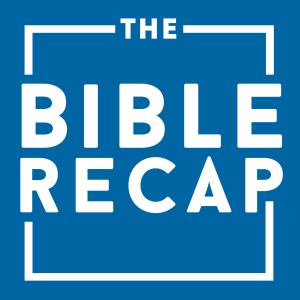This is the fifth of eleven movements in the updated and expanded 2023 recording of my From Glory to Glory suite.
The opening of John’s gospel represents God the Son as the divine logos, or rational principle behind creation. Only this logos reveals God in person through the incarnation. The lyrics combine an English translation of the opening of John’s gospel, with the Greek terms: Logos (Word), Agathos (Goodness), Veritas (Truth), and Kalos (Beautiful-Good).
From Glory to Glory is available as a high quality wav file album on Soundcloud: https://soundcloud.com/psw_music/sets/from-glory-to-glory-2023
From Glory to Glory is a little under 70 min long suite of contemporary classical music, reflecting on the biblical story and Christian spirituality, drawing upon an eclectic fusion of musical influences. The suite is written for four part choir and an ensemble of instruments. The lyrics are a mixture of English, Latin, Greek, and Hebrew.
In summer 2023 it struck me that my Sibelius 6 software was 13 years old, and that contemporary software would probably be able to reproduce the sound of a choir singing lyrics, rather than simply going “Ah”! Discovering that this was indeed the case, I reached out to find someone who could use my composition files to produce a new recording of From Glory to Glory using contemporary music technology. That person turned out to be Cuban composer Wilma Alba Cal, whose work includes chamber, choir, orchestral and electroacoustic music (see https://wilmaalbacal.com/). Over the summer of 2023, Wilma used my ‘Sibelius 6’ files and scores to make an updated recording of From Glory to Glory that sounds much more realistic than before, and where the choir sing the words on the scores. This was a collaborative process that involved Wilma gathering information on the sounds I had in mind when selecting from the instruments available in Sibelius 6, and several rounds of feedback about various pre and post-sound-mix versions of the tracks.
Instruments: SATB Choir, Gong, Bass Drum, Tubular Bells, Glockenspiel, Vibraphone, Acoustic Guitar, Harp, Two Flutes, Grand Piano, Pipe Organ, Min-Moog Synth Lead, Mellatron Strings, Mellatron Choir, Cello, Electric Bass, Synth Bass.
Track Notes
Movement 1: Trinity. We open with God’s existence prior to creation. A solo piano plays three musical lines, the third of which is generated from the interaction of the first two, representing the way in which God the Father is the “root” of the Divine “triad”, God the Son eternally depends upon the Father, and God the Holy Spirit “proceeds” from the Father and the Son. The piece is also Trinitarian in having three sections. It ends on an unresolved chord, suggesting the eternality of the Godhead.
Movement 2: Light. The angels rejoice in God’s creation of light and “dance” among the stars.
Movement 3: One Sin. This piece draws upon the opening of G.K. Chesterton’s poem “Ecclesiastes”: “There is one sin: to call a green leaf gray, Whereat the sun in heaven shuddereth.” In other words, the fundamental sin is acting as if we were wiser than God, as if moral reality should bend to our choices and desires rather than vice versa. The consequences of sin for relationships between humans and with God is represented by the entry of the minor key and the music becoming broken up.
Movement 4: Weeping Turns to Joy. This setting of words from Psalm 6:6 and 30:5 was composed in July 2021, as a short, stand-alone piece reflecting on the end of Covid 19 restrictions. In August 2023, I decided to add it into this suite, where it neatly represents the Old Testament experiences of exile (“By the rivers of Babylon we sat and wept when we remembered Zion.” – Psalm 137:1) and hope centered upon in the promised coming of God’s messiah.
Movement 5: Logos. The opening of John’s gospel represents God the Son as the divine logos, or rational principle behind creation. Only this logos reveals God in person through the incarnation. The lyrics combine an English translation of the opening of John’s gospel, with the Greek terms: Logos (Word), Agathos (Goodness), Veritas (Truth), and Kalos (Beautiful-Good).
Movement 6: Love. An acapella setting of Jesus’ answer to a scribe’s question about the greatest commandment in Mark 12.
Movement 7: Garden. In the garden of Gethsemane, Jesus contemplates his calling to be crucified as a sacrifice for sin and prays that his Father might take away this cup of suffering from him. The music uses suspended resolutions and a fluctuating pattern of major and minor notes that gradually become more resolute and hymn-like as Jesus turns his face to the cross, praying that the Father’s will be done on earth.
Movement 8: Agnus Dei. Based on the saying of John the Baptist: “Behold, the Lamb of God, who takes away the sin of the world!” (John 1:29), the Agnus Dei (Latin for “Lamb of God”) is a traditional liturgical chant that contemplates the meaning of Jesus’ death on the cross in light of his subsequent bodily resurrection from the tomb. Far from being just another failed messiah, Jesus is God’s self-sacrifice of forgiveness in bearing our sin.
Movement 9: Kyrie. A setting of the Latin Kyrie, a traditional prayer for forgiveness, which in English means: “Lord, forgive us, Christ forgive us, Lord forgive us.”
Movement 10: Telos. This piece was inspired by John’s vision of the new heavens and earth in Revelation 21. The choir sing about God’s invitation to the wedding feast of the Lamb (i.e. Jesus Christ) who will wipe away ever tear from our eyes and bring “Shalom” (a Hebrew word meaning peace, wholeness and flourishing).
Movement 11: Gloria. This piece recapitulates the theme of movement one, using it as a setting for the apostle Paul’s comparison between the sufferings of the present world and the glory of the new heavens and earth to come.
For more composition-related information, visit: https://www.peterswilliams.com/composing/
More Episodes
Is Christianity Childish? Rhetorical Advice for Christian Apologists from C.S. Lewis’ Essay ‘On Three Ways of Writing for Children’.
 2021-11-19
2021-11-19
A Christian Worldview and Science in Apologetic Perspective: Communicating in Church Contexts
 2021-10-25
2021-10-25
A Christian Worldview and Science in Apologetic Perspective: Theological Perspective - Genesis, Creation & Mythology
 2021-10-25
2021-10-25
A Christian Worldview and Science in Apologetic Perspective: Historical Perspective - The Conflict Thesis
 2021-10-25
2021-10-25
A Christian Worldview and Science in Apologetic Perspective: Anthropos
 2021-10-25
2021-10-25
A Christian Worldview and Science in Apologetic Perspective: Bios (b) Intelligent Design Theory
 2021-10-25
2021-10-25
A Christian Worldview and Science in Apologetic Perspective: Bios (a) Introduction to Darwinism
 2021-10-25
2021-10-25
A Christian Worldview and Science in Apologetic Perspective: Cosmos
 2021-10-25
2021-10-25
A Christian Worldview and Science in Apologetic Perspective: Introduction
 2021-10-25
2021-10-25
Outgrowing God? (November 2021)
 2021-10-24
2021-10-24
Apologetics in 3D (November 2021)
 2021-10-21
2021-10-21
ELF 2021: Archaeological Evidence for Jesus
 2021-06-07
2021-06-07
ELF 2021: 'Old Testament Historicity: From Abraham's Ur to Daniel's Babylon'
 2021-05-28
2021-05-28
ELF 2021: 'How Our Desires Point to God: C. S. Lewis’ Theistic Argument from Desire'
 2021-05-17
2021-05-17
‘Science, Natural Theology, and Christian Apologetics’: A Conversation between Peter S. Williams and Lars Dahle about a special Theofilos issue
 2021-05-05
2021-05-05
Richard Dawkins vs the Case for God - a critical guide
 2021-04-23
2021-04-23
The Dawkins – Lennox God Delusion Debate: Three Philosophical Problems with Dawkins’ Worldview
 2021-04-23
2021-04-23
Cosmic Fine Tuning: Design or Multiverse?
 2021-04-23
2021-04-23
From glory to glory
 2021-04-14
2021-04-14
Preaching for Spiritual Formation: Luke 7:36-50
 2021-03-15
2021-03-15
Create your
podcast in
minutes
- Full-featured podcast site
- Unlimited storage and bandwidth
- Comprehensive podcast stats
- Distribute to Apple Podcasts, Spotify, and more
- Make money with your podcast
It is Free
You may also like

Straight TV


The Tangent on Veritas Catholic Network


Life After Ministry


The Bible Recap


BardsFM


- Privacy Policy
- Cookie Policy
- Terms of Use
- Consent Preferences
- Copyright © 2015-2024 Podbean.com



 iOS
iOS Android
Android